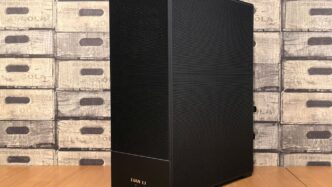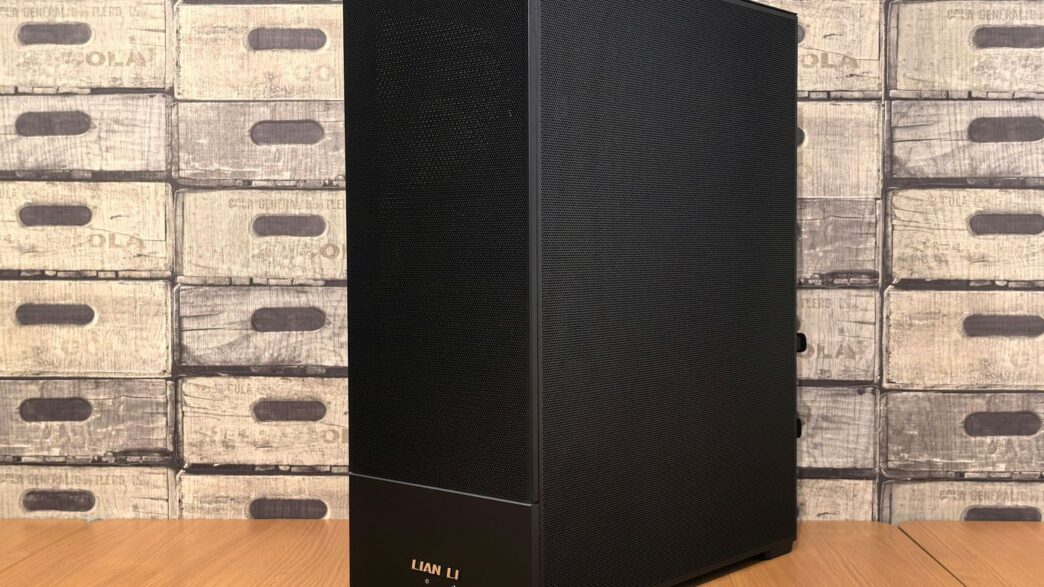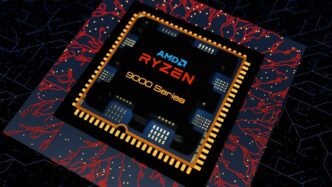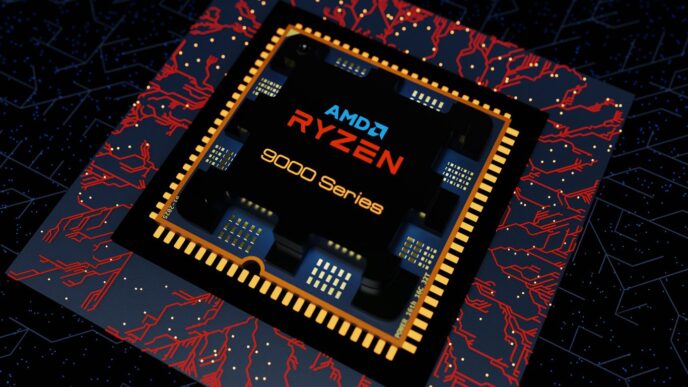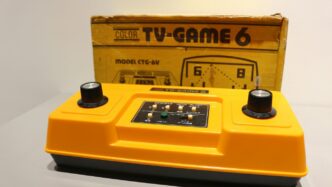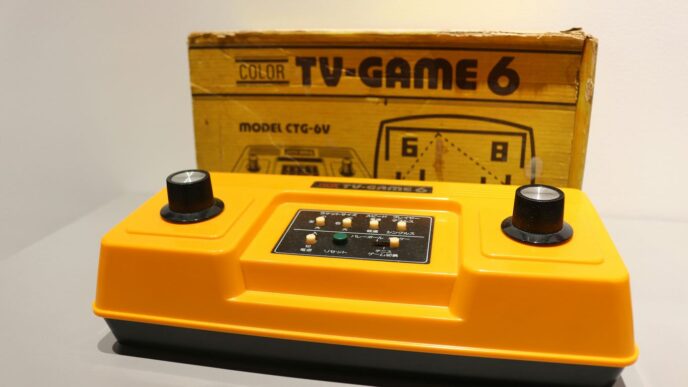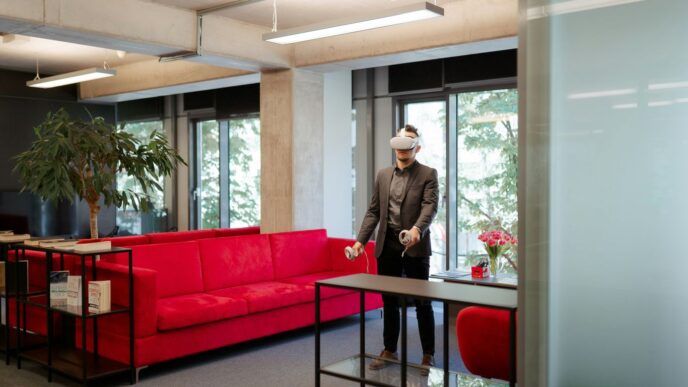So, you’re thinking about building a new PC, or maybe just upgrading your current one. A lot of folks don’t give the case much thought at first, which is kind of a shame. It’s not just about how your whole setup looks, you know? A good pc case full tower also helps keep your parts cool and makes it way easier to swap things out later if you need to. This guide is all about picking the right full tower case, which is basically the biggest kind of case you can get. They’re great if you want to cram in a ton of powerful stuff or just have a really fancy cooling setup. We’ll go over why you might want one, what to look for, and some popular choices out there.
Key Takeaways
- Full tower PC cases offer a lot of room, which is great for big components like powerful graphics cards or lots of storage drives.
- These big cases usually have better airflow and can fit more fans or big liquid coolers, helping to keep your PC from getting too hot.
- When picking a pc case full tower, think about how many fans it can hold, if your parts will fit, and how much storage you can add.
- Don’t forget about how the case looks! Many full towers have cool designs, tempered glass, and RGB lighting to make your build stand out.
- Consider what you’ll use your PC for – gaming, work, or something else – to decide which features are most important for your specific needs.
Understanding Full Tower PC Case Advantages

So, you’re thinking about building a new PC, maybe something a bit more beefy than your average setup. When you start looking around, you’ll notice there are different sizes of cases, and the full tower is the biggest kid on the block. Now, why would you want something so massive? Well, it turns out there are some pretty good reasons, especially if you’re aiming for a high-performance machine or just like having plenty of room to tinker.
Spacious Interior for High-End Components
First off, these things are huge. Seriously, you could probably fit a small child in some of them (don’t do that, though). What this really means for your build is that you have a ton of space to work with. You can fit those massive graphics cards that are all the rage these days, even the really long ones. Plus, if you’re planning on running multiple GPUs or a fancy custom water-cooling setup, a full tower gives you the breathing room you need. It’s not just about cramming stuff in; it’s about having enough space so that everything isn’t practically touching, which is good for airflow and makes your life a lot easier when you’re actually putting it all together. You won’t be wrestling with tight corners or trying to force components into place.
Superior Cooling Potential
Because full towers are so big, they naturally offer better cooling possibilities. Think about it: more space means you can fit more fans, bigger fans, or even multiple radiators for liquid cooling. This is super important if you’re running powerful hardware that kicks out a lot of heat. Keeping your components cool helps them run better and last longer. You can set up a really effective airflow system, pulling cool air in and pushing hot air out, without everything feeling cramped. It’s like giving your PC’s lungs plenty of room to breathe.
Here’s a quick look at what you can typically fit:
- Fans: Often support 6-10+ fan mounts, with options for 120mm, 140mm, and sometimes even larger sizes.
- Radiators: Can usually accommodate 240mm, 280mm, 360mm, and sometimes even 420mm or 480mm radiators for liquid cooling.
- Airflow Paths: More direct routes for air to travel through the case, reducing turbulence and improving efficiency.
Future-Proofing and Expandability
Buying a full tower case isn’t just about your current build; it’s also about what you might want to do down the line. Because there’s so much space, you can easily add more storage drives later on – think extra SSDs or HDDs. Need to upgrade your graphics card to the next big thing? No problem. Want to add more cooling or maybe a different kind of motherboard? A full tower usually has the flexibility to handle those changes without you needing to buy a whole new case. It’s a solid investment if you like to keep your options open and upgrade your system piece by piece over time.
Key Features to Consider in a Full Tower PC Case
Alright, so you’ve decided a full tower case is the way to go. That’s awesome! These things are like the mansions of the PC world, giving you tons of room to play with. But just because it’s big doesn’t mean it’s automatically the right fit. We need to talk about what really matters inside that big ol’ box.
Airflow and Cooling Solutions
This is probably the most important thing, honestly. If your components are running hot, they’re not going to perform their best, and that’s a bummer. Full towers usually give you more spots for fans, and sometimes even space for big radiators if you’re thinking about liquid cooling. You want to make sure there’s good airflow, meaning air can get in and out easily. Think about where the fans go – usually, you want some pulling cool air in from the front and some pushing hot air out the back and top. Some cases even come with fans already installed, which is a nice bonus.
- Fan Mounts: Check how many fans the case supports and what sizes. More is usually better for cooling.
- Radiator Support: If you’re into custom water cooling or AIOs, see if the case can fit the radiator size you need (like 240mm, 280mm, or even 360mm).
- Dust Filters: These are super helpful for keeping the inside of your PC clean. Look for filters on the intake areas, especially the front and bottom.
Component Clearance and Compatibility
With a full tower, you’ve got space, but you still need to make sure everything actually fits. This is especially true for big graphics cards. Those new high-end GPUs can be massive, so you’ll want to check the maximum GPU length the case supports. It’s also good to know what size motherboard it can handle – most full towers will fit standard ATX and E-ATX boards, but it’s always good to double-check. You don’t want to get halfway through your build and realize your giant video card won’t fit.
Here’s a quick rundown:
- CPU Cooler Height: If you’re using a big air cooler, make sure it’s not too tall for the case.
- GPU Length: Measure your graphics card or check its specs and compare it to the case’s maximum supported length.
- Motherboard Support: Confirm it supports your motherboard size (ATX, E-ATX, etc.).
Storage Options and Expandability
Full towers usually give you a lot of room for hard drives and SSDs. If you’re someone who stores a ton of games, movies, or work files, this is a big plus. You’ll often find dedicated bays for 3.5-inch HDDs and smaller mounts for 2.5-inch SSDs. Some cases even have clever ways to hide your drives behind the motherboard tray, which helps with cable management and keeps the main compartment looking clean. This extra space also means you can add more storage down the line if you need it, which is great for future upgrades.
- Drive Bays: Count how many 3.5" and 2.5" drive bays are available.
- Hot-Swap Bays: Some cases offer hot-swap bays, letting you swap drives without shutting down your PC.
- Cable Management: Look for features like tie-down points, cutouts, and space behind the motherboard tray to keep things tidy.
Aesthetics and Customization Options
So, you’ve got all your powerful parts picked out, but what about how your rig actually looks? This is where aesthetics and customization come into play, and with full tower cases, you’ve got a ton of room to play. It’s not just about stuffing components in; it’s about making a statement.
Full towers offer a big canvas, and manufacturers really go all out with different styles. You can find cases that are sleek and minimalist, almost like a piece of modern furniture, or ones that scream ‘gamer’ with aggressive lines and bold accents. Think about the overall vibe you’re going for. Do you want something that blends into your workspace, or a centerpiece that demands attention? Color is a big one too – black and white are classics, but you’ll see silver, gunmetal grey, and even some wilder finishes. Some cases even have unique textures or finishes that add a subtle touch of class.
- Minimalist: Clean lines, often matte finishes, and fewer visible logos. Great for a professional or understated look.
- Aggressive/Gamer: Sharp angles, prominent branding, and often a more industrial feel.
- Unique: Cases with unusual shapes, materials, or design elements that stand out.
Ultimately, the case is the most visible part of your build, so pick something you’ll enjoy looking at every day.
If you’re into lighting, full towers are usually packed with options. Many come with pre-installed RGB strips, often along the front panel, top, or even integrated into the feet. You can usually control these lights through software that comes with the case or your motherboard, allowing you to sync them up with other components or set them to specific colors and effects. Some high-end cases even feature individually addressable LEDs, which give you much finer control over animations and color transitions. It’s a great way to add personality, but if it’s not your thing, most cases allow you to turn the RGB off completely.
Tempered glass side panels have become super popular, and for good reason. They let you show off your hard work – all those shiny components, custom cables, and that fancy RGB lighting. Full towers often feature large, edge-to-edge tempered glass panels, giving you an unobstructed view of your build. Some even have tinted glass if you prefer a more subdued look or want to hide some of the less glamorous bits of your build. Just remember, while tempered glass looks great, it’s still glass, so be careful when moving the case around. It’s also worth checking how the panel attaches – some use thumbscrews, while others have tool-less latches, which can make access a bit quicker.
Evaluating Build Quality and Materials

When you’re looking at a full tower PC case, it’s not just about how it looks or how much stuff you can cram inside. You’ve got to think about what it’s actually made of and how well it’s put together. This stuff matters because a solid case protects your expensive components and can even make your whole setup run better.
Durability and Construction
Think about what the case is made from. Most good cases use steel for the frame, which is strong and doesn’t bend easily. The panels might be steel too, or sometimes aluminum, which is lighter but can feel a bit less sturdy. You want a case that feels solid when you touch it, with no wobbly bits or sharp edges. A well-built case will hold up better over time and during moves. It’s also worth checking how the panels attach – do they screw on securely, or do they feel flimsy?
Noise Dampening Features
Full towers often have more space, which can be good for airflow, but it can also mean more noise bouncing around. Some cases come with special sound-dampening foam on the inside panels, usually on the front door and side panels. This foam absorbs sound, making your PC quieter, especially if you have loud fans or a noisy hard drive. It’s a nice touch if you’re sensitive to noise or if your PC is going to be in a living area. You can also add your own sound-dampening material later if you find your case is too loud, but it’s easier if it’s built-in.
Ease of Installation and Maintenance
Building a PC in a full tower should be a pretty smooth experience, but the case design can make a big difference. Look for features that make things easier, like:
- Tool-less drive bays: These let you install hard drives and SSDs without needing screws.
- Removable dust filters: These are usually found at the front, bottom, and top of the case. They catch dust and are easy to pull out and clean, which is super important for keeping your components cool and your PC running well. You can find some great options for cases with good airflow and dust management in our reviews.
- Ample cable management: This means having plenty of space behind the motherboard tray and lots of tie-down points to route your cables neatly. Good cable management not only looks better but also improves airflow.
- Generous space around the motherboard: More room to work means you won’t be fumbling around trying to plug in cables or install large CPU coolers.
Choosing the Right Full Tower for Your Needs
So, you’ve decided a full tower is the way to go. That’s awesome! But now comes the part where you actually pick one. It’s not just about getting the biggest box; it’s about finding the right fit for what you’re planning to do with your PC. Think of it like picking out a tool – you wouldn’t use a sledgehammer to crack a nut, right? Same idea here.
Gaming and High-Performance Builds
If you’re building a beast for gaming or some serious number crunching, you’re going to want a case that can handle the heat. High-end graphics cards, like the latest Nvidia or AMD models, are massive and they get hot. You’ll need plenty of room for these giants, plus space for a robust cooling setup. This usually means lots of fan mounts, support for big radiators if you’re going the liquid cooling route, and good airflow paths to keep everything from melting.
- Massive GPU Clearance: Make sure the case specs list support for the length of your chosen graphics card. Some of the biggest cards can be over 14 inches long!
- Cooling Options: Look for cases that can fit at least a 360mm radiator, and ideally more. More fans mean better airflow, which is key for keeping those high-performance parts running smoothly.
- Power Supply Space: Don’t forget that powerful components need a beefy power supply, and those can be quite long too. Ensure there’s enough room for it without blocking airflow.
Workstation and Professional Setups
For folks building a workstation for video editing, 3D rendering, or software development, expandability and storage are often the main focus. You might not need the absolute bleeding edge in GPU cooling, but you’ll probably want room for multiple hard drives and SSDs to store all your projects. Cable management also becomes more important here, as a tidy build looks more professional and is easier to work on later.
- Storage Bays: Check how many 3.5-inch and 2.5-inch drive bays are available. Some cases have dedicated spots that make installing drives a breeze.
- Cable Management: Look for features like grommeted cutouts, Velcro straps, and plenty of space behind the motherboard tray. This makes a huge difference in keeping things neat.
- Quiet Operation: If your workstation is in your office or living space, noise might be a concern. Some full towers have sound-dampening materials built-in, which can make a big difference.
Balancing Features and Budget
Let’s be real, full towers aren’t cheap. They’re big, they use more materials, and they often come packed with features. So, you’ve got to figure out what’s most important to you and where you can save a bit of cash. You don’t always need every single bell and whistle to get a great build.
Here’s a quick way to think about it:
| Feature Category | High Priority | Medium Priority | Lower Priority |
|---|---|---|---|
| Cooling | Liquid cooling support, multiple fan mounts | Good stock fans, decent airflow paths | Basic fan mounts |
| Storage | 6+ drive bays (mix of 3.5"/2.5") | 4-5 drive bays | 2-3 drive bays |
| Aesthetics | Tempered glass, RGB integration | Clean design, good build materials | Basic plastic panels |
| Build Quality | Premium materials, solid construction | Decent metal and plastic | Standard materials |
Think about what you really need versus what would be nice to have. Sometimes, a slightly less flashy case with excellent airflow and plenty of room is a much better investment than a case that looks amazing but struggles to keep your components cool. Don’t be afraid to spend a bit more on a case if it means your expensive components will run better and last longer.
Popular Full Tower PC Case Brands and Models
Alright, so you’ve decided a full tower is the way to go. Awesome! Now comes the fun part: picking out the actual case. It’s a big decision, and honestly, there are a ton of options out there. It can feel a little overwhelming, but don’t sweat it. We’re going to look at some of the big names and what makes them stand out. Think of this section as a starting point, a way to get your bearings in the world of massive PC cases.
Top-Rated Full Tower Selections
When you’re looking for a full tower, you want something that’s built well and has a good reputation. Brands like Corsair, Lian Li, and Phanteks consistently pop up. Corsair, for instance, has their Obsidian series, which are usually pretty sleek and offer a lot of room. Lian Li often brings some really innovative designs to the table, sometimes with unique materials or layouts. And Phanteks? They’re known for making cases that are pretty easy to build in, which is a big plus if you’re not a seasoned pro. These brands generally put out cases that are sturdy and have good airflow, which, as we’ve talked about, is super important.
Innovative Designs in the Market
Beyond the usual suspects, there are always companies pushing the envelope. You might see cases with really wild front panels, like infinity mirrors or intricate mesh patterns, that really make a build pop. Some cases are focusing on making cable management even easier, maybe with special routing channels or even back-connecting motherboards. Then there are the cases designed for extreme cooling, with mounts for multiple large radiators and tons of fan spots. It’s worth keeping an eye on these because they can offer features you didn’t even know you needed.
Cases for Specific Build Goals
So, what are you actually building? If you’re going for a silent build, look for cases that specifically mention noise dampening features, like thicker panels or sound-absorbing foam. For a showpiece build, you’ll want something with plenty of tempered glass and good spots for RGB lighting. If you’re a hardcore gamer who needs to fit the biggest, baddest graphics card and keep it cool, prioritize airflow and component clearance above all else. And for a workstation, you might want to focus on storage expandability and a clean, professional look. It really boils down to what you want your PC to do and how you want it to look doing it.
Wrapping It Up: Your Full Tower Journey
So, we’ve gone through all the ins and outs of picking a full tower PC case. It’s a big decision, for sure, because these cases are massive and can hold pretty much anything you throw at them. Think huge graphics cards, tons of storage, and even complex cooling setups. Remember, while all that space is great, it also means these cases can be pricey. If your budget is tight, a mid-tower might be a better fit. But if you’re aiming for the ultimate build with maximum expandability and cooling potential, a full tower is definitely the way to go. Take your time, consider what you really need, and pick a case that not only performs well but also looks good to you. Happy building!
Frequently Asked Questions
What exactly is a full tower PC case?
Think of a full tower PC case as the biggest kind of box for your computer parts. It’s much larger than the usual mid-tower cases, giving you tons of room to fit all sorts of high-end components, like the biggest graphics cards and lots of storage drives. It’s like getting a mansion for your PC!
Why would I need such a big case?
A big case means you can put in the most powerful parts without them getting too hot. It also lets you add extra fans or even fancy water-cooling systems to keep everything running smoothly, especially for demanding games or complex work. Plus, you’ll have plenty of space to upgrade later on.
Are full tower cases good for cooling?
Yes, they are fantastic for cooling! Because they’re so big, you can fit more fans and larger cooling parts, like radiators for water cooling. This helps keep your computer’s parts from getting too hot, which is important for performance and making them last longer.
Do full tower cases look cool?
Many full tower cases are designed to look awesome. They often have cool designs, tempered glass windows to show off your parts, and even built-in lights (like RGB) that you can change to match your style. So, they can definitely make your computer setup look amazing.
Are full tower cases hard to build in?
While they are big, they are usually easier to build in because there’s so much space to work with. You won’t be struggling to connect cables or fit large components. It makes the building process much less frustrating, even for beginners.
Are full tower cases expensive?
Generally, yes, full tower cases tend to be more expensive than smaller cases. This is because they use more materials and often come with more features. However, they offer a lot of benefits in terms of space, cooling, and expandability, which can be worth the extra cost for serious builders.

